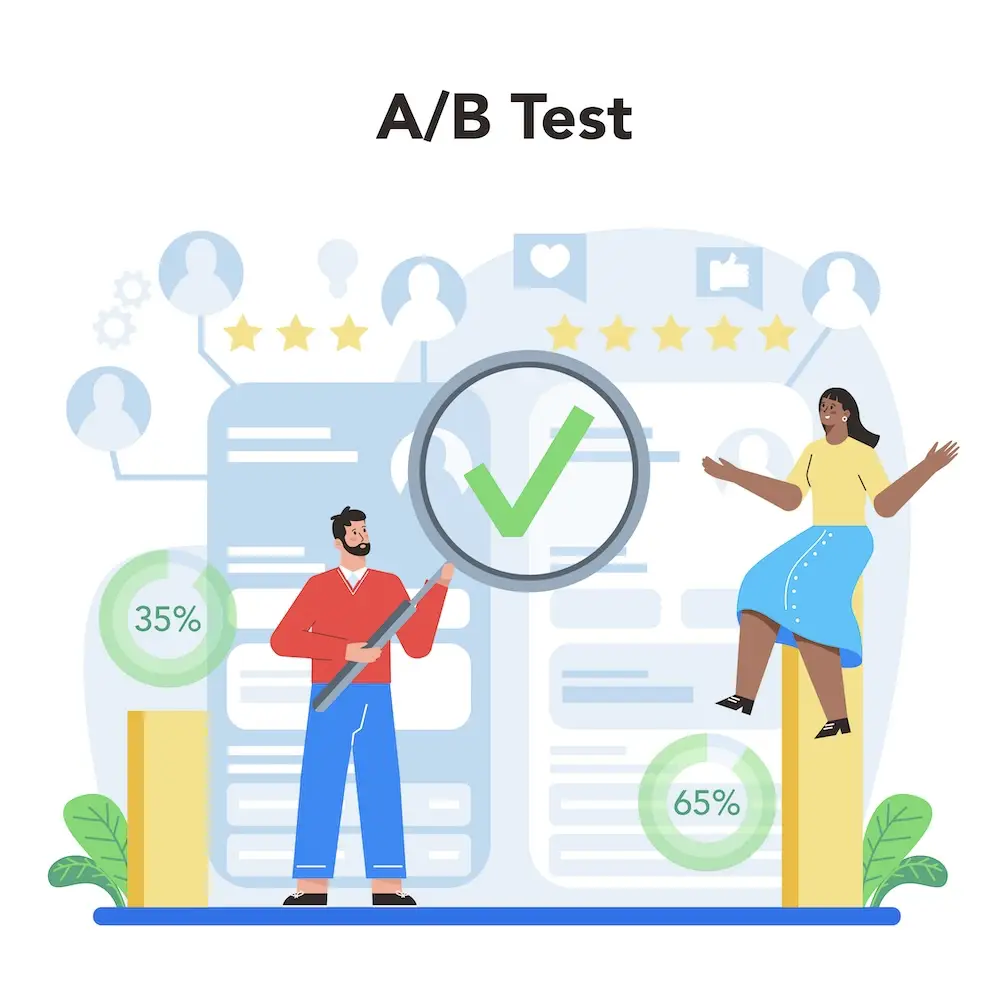Understanding A/B Testing in Performance Marketing

What is A/B Testing?

A/B testing, also known as split testing, is a method used to compare two versions (A and B) of a webpage, email, or other marketing assets to determine which one performs better. It involves showing these variations to different segments of your audience and measuring their responses to identify which version is more effective in achieving the desired goals, such as conversions, click-through rates, or engagement.
Why is A/B Testing Important?
A/B testing is important for several reasons:
Data-Driven Decision-Making: A/B testing is based on empirical data rather than assumptions. It allows marketers to make informed decisions rather than relying on gut feelings or intuition.
Optimisation: By comparing two versions of a marketing element, you can identify what works and what doesn’t. This enables you to optimize your marketing efforts and get the most out of your resources.
Continuous Improvement: In the digital world, stagnation leads to irrelevance. A/B testing fosters a culture of continuous improvement, where marketers are always looking for ways to refine their strategies.
Cost-Efficiency: A/B testing helps allocate resources more efficiently by investing in strategies that deliver the best results. It reduces the waste of marketing budget on less effective approaches.
Role of A/B Testing in Performance Marketing

Performance marketing is all about achieving measurable results, and A/B testing plays a pivotal role in this discipline:
Conversion Rate Optimisation: A/B testing is crucial for optimising conversion rates. Marketers can experiment with various elements of their landing pages or ad creatives to determine which combination results in the highest conversion rates.
Personalisation: A/B testing allows for the customization of marketing messages and content based on user behaviour and preferences, enhancing the overall user experience and driving better performance.
Ad Campaigns: Marketers can use A/B testing to refine ad copy, design, and targeting, resulting in more effective ad campaigns. This is particularly useful in pay-per-click (PPC) advertising.
Email Marketing: A/B testing is a valuable tool for optimising email marketing campaigns. Marketers can test different subject lines, content, and sending times to improve open rates and click-through rates.
Benefits of A/B Testing in Performance Marketing
The benefits of A/B testing in performance marketing are manifold:
Improved ROI: A/B testing helps in identifying the most effective strategies, leading to increased return on investment.
Enhanced User Experience: Personalisation and Optimisation efforts based on A/B testing result in a better user experience, increasing customer satisfaction and loyalty.
Reduced Risk: Testing allows marketers to mitigate the risks associated with new strategies or changes by validating them with data.
Competitive Advantage: Staying ahead of the competition is easier when you continually improve your marketing efforts, a feat that A/B testing helps achieve.
Building a Connection with Users:
Why A/B Testing Matters in Design

A/B testing is a crucial tool in the design process. Design isn’t just about art; it’s a blend of art and science that relies on data from research and idea generation. Figuring out which version of your landing page or social ad works best is vital for improving conversions and generating more leads.
Here are three reasons why performance marketers should test design variations:
● A/B tests help marketers share valuable insights with their designers.
● User behaviour data informs the design process, leading to new creative ideas and approaches.
● Involving your designer throughout the process can boost ROI.
Real-World Examples
Google: Google is a pioneer in A/B testing. It famously tested 41 shades of blue for its search result links to determine the most clickable shade.
Amazon: Amazon continuously tests various elements on its website, such as the layout, product descriptions, and buttons, to optimize the user experience and boost sales.
Spotify: Spotify uses A/B testing to personalize music recommendations for each user. The platform tests various algorithms to find the one that keeps users engaged and subscribing.
Netflix: Netflix A/B tests its platform design, artwork, and recommendation algorithms to enhance user engagement and retention.
Wrapping Up
A/B testing is an indispensable tool in performance marketing. It empowers marketers to make data-driven decisions, optimize campaigns, and achieve better results. In a rapidly evolving digital landscape, A/B testing is the compass that guides marketers toward the path of continuous improvement and success. By learning from real-world examples and embracing this method, performance marketers can stay competitive and deliver the results that matter.





